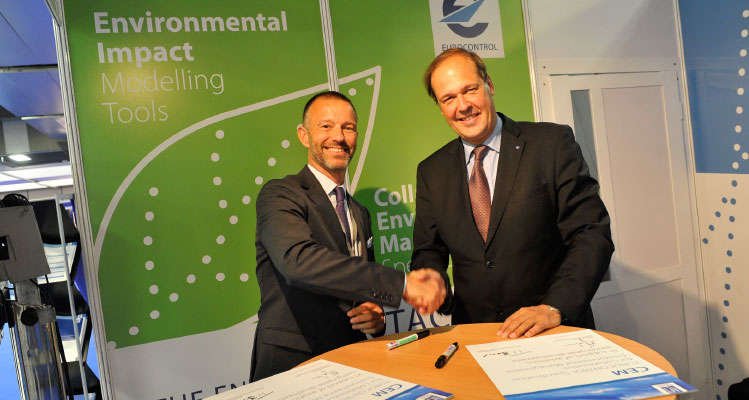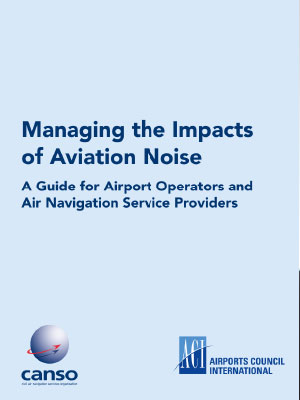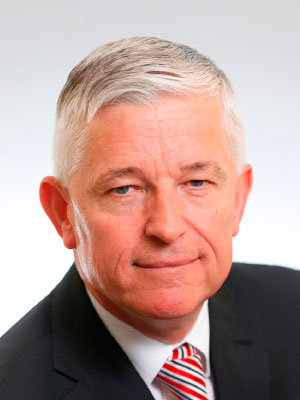By Sharon Mahony, Pan-European Single Sky Directorate / Support to SES-related Policies Unit, EUROCONTROL
The adoption of the Paris Agreement at the COP21 in December last year and the long negotiations leading up to it refocused the world’s attention on the global environmental challenges it faces and the need to take action.
In this respect the aviation sector, one of the world’s most heavily regulated industries, has for many years taken on its own environmental challenge – as seen in the considerable efforts made by airports, aircraft operators and air navigation service providers to address the impact of their daily operations both in terms of noise and emissions. The increased use of continuous descent operations (CDO) is a good example of this.
Future
Traffic in Europe is now starting to grow again and the current forecasts are for 14.4 million flights by 2035. The capacity of European airports, particularly the hubs, is expected to become an increasingly significant constraint on this growth. As the Director General of EUROCONTROL pointed out in May at the ITF Summit in Leipzig “by 2035 there will be 20 European airports operating at 80% or more of capacity for six consecutive hours; and that’s allowing for the fact that 1.9 million flights will not happen, simply because we do not expect to have the capacity on the ground to accommodate them”.
In this context a crucial factor contributing to the constraints on airports is the impact of the concerns of the surrounding local communities and residents, in general relating to noise but also to local air quality issues and increases in surface traffic. These concerns translate into opposition to operating hours (night flights), procedures and the (re)development of new and existing runways. Until recently there has been no harmonised approach at the European level to support collaboration between operational stakeholders at airports in dealing with these growing environmental challenges.
What is EUROCONTROL’s role in supporting all stakeholders?

The CEM specification was adopted by ACI EUROPE as a Recommended Practice. Pictured are Olivier Jankovec, Director General, ACI EUROPE, and Frank Brenner, Director General, EUROCONTROL.
In 2014 this situation changed with the publication of EUROCONTROL’s Collaborative Environmental Management (CEM) Specification – drafted by EUROCONTROL with the support of its stakeholders across the entire European aviation sector.
The objective of CEM is to “formalise collaboration among the core operational stakeholders at airports by setting out generic high level requirements and recommended practices, necessary to establish CEM working arrangements”. What this means in practice is that all the core operational stakeholders: Airport Operators, Aircraft Operators and Air Navigation Service Providers, work together to understand the interdependencies and constraints of each other’s business and to develop and implement shared environmental solutions.
Through the setting up of CEM working arrangements or the adaptation of existing ones, airport operational stakeholders can be in a better position to deal with local communities’ concerns by taking them on board internally at an early stage. This can potentially facilitate a robust and transparent dialogue that benefits relations with authorities and stakeholders beyond the local level.
In addition to enabling CEM working arrangements, EUROCONTROL can also facilitate solutions to the Environmental Challenge through the provision of data and modelling capabilities that can simulate the environmental impact, particularly of noise at and around airports. This is an important consideration in the potential introduction of any new technology or operating procedure that can have an impact on local communities.
CEM can therefore provide a forum to discuss the enhancement of operational improvements and to discuss issues with the local community, for example relating to potential CDO and PBN (Performance Based Navigation) implementation.

CEM is referred to as a recommended action in the joint guidance on noise mitigation published by CANSO and ACI World.
Recognition by industry
Significantly industry has also recognised the benefits of CEM and the need to consider local communities. Thus, the CEM specification was adopted by ACI EUROPE as a Recommended Practice. On that occasion, Olivier Jankovec, Director General ACI EUROPE has said “Environmental management is a core issue for European airports, as it is a vital part of earning our license to grow. Over the years, we have been addressing critical priorities like carbon emissions, noise and local air quality, with tailored approaches. In the collaborative environment of an airport, bringing these processes together is a natural next step.”
CEM is also referred to as a recommended action in the joint guidance on noise mitigation published by CANSO and ACI World. Jeff Poole, the Director General of CANSO, recently said: “The aviation industry has achieved substantial and measurable reductions in noise over the last 50 years through a mixture of airframe and engine technology and operational efforts. But the problem still exists and we must make every effort to mitigate the impact of aviation noise for people on the ground, especially those living around airports.”
Practical support to CEM Working Arrangements and further developments

Jeff Poole, Director General, CANSO: “The aviation industry has achieved substantial and measurable reductions in noise over the last 50 years through a mixture of airframe and engine technology and operational efforts. But the problem still exists and we must make every effort to mitigate the impact of aviation noise for people on the ground, especially those living around airports.”
Workshops
Following the recommendations of the first CEM Peer Workshop, organised jointly by EUROCONTROL and ACI EUROPE last year and hosted by Vienna Airport, a ‘Getting Started’ workshop will be organised this September. This one-day workshop will introduce the concept of CEM together with concrete examples from practitioners on how to set up or adapt pre-existing Working Arrangements. Details will be announced by EUROCONTROL soon.
CEM Web Tool
The CEM Web Tool has been developed with a range of both internal and external stakeholders. Its purpose is to provide a harmonised, practical platform to facilitate core operational stakeholders at airports in their efforts to establish a CEM Working Arrangement. Each CEM Working Arrangement is unique and can only be accessed by its members.
Functionalities include a dashboard option that can display compliance levels and monitor progress. Filtering and print options provide opportunities to download customised reports.
The platform may also help stakeholders that need to provide evidence to respond to voluntary carbon-reduction programmes, environmental certification schemes or to meet environmental legislative reporting requirements etc.
The release of the CEM Web Tool is planned for the end of June 2016.
In conclusion, no one single entity can resolve the environmental challenge of the aviation sector. At the level of airports existing efforts on both the environmental and operational sides must continue in ever-greater collaboration to work towards solutions. Taking communities’ concerns on board early is vital and the CEM Working Arrangement process and supporting tools can help to achieve this.
More information is available on:
www.eurocontrol.int/environment & cem@eurocontrol.int.







